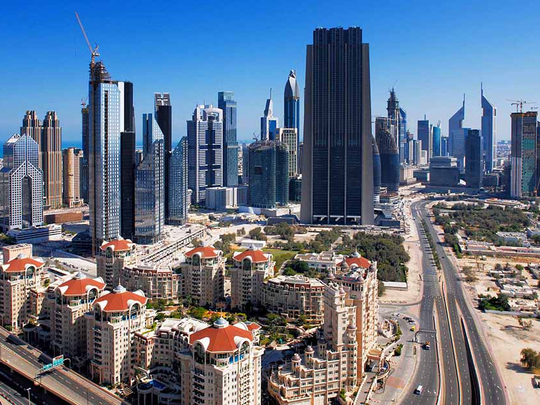
Dubai: The UAE economy is showing signs of recovery from the contraction in May as the country emerged from its strictest lockdown measures, according to the latest Purchasing Managers’ Index data.
The PMI data for May from IHS Markit showed Output fell to a much lesser extent than April’s unprecedented pace, yet firms were still limited by a weak market environment and lower employment.
Greater freedom of travel meanwhile led to an easing of supply chain pressures, while input costs ticked up for the first time since February.
The headline seasonally adjusted PMI, a composite indicator of operating conditions in the non-oil private sector economy - increased from a record low of 44.1 in April to 46.7 in May.
“The change in curfew hours in May helped to lighten the impact on the UAE economy, PMI data suggests, with the headline index rising to 46.7 from a record low of 44.1 in April,” said David Owen, Economist at IHS Markit
Demand challenge
Despite reaching the highest in three months, the latest figure indicated a decline in business conditions. However, as several businesses were able to reopen and increase output due to lighter curfew measures, the rate of decline eased back from April’s record. Nevertheless, many firms highlighted that client demand remains, indicated by another lower new order volumes. Export orders also declined for the fourth month running, mainly linked to ongoing lockdown measures in GCC countries and other markets.
Data showed UAE firms continued to reduce employment numbers in May, although the latest fall was the softest since February. Businesses reported that excess capacity remained, whilst rising cost pressures led them to make further adjustments to salaries. As a result, staffing costs fell solidly and at the quickest pace in the survey’s history.
Mendng supply chains
More positively, the partial lifting of travel restrictions allowed suppliers to make greater numbers of deliveries in May. Lead times continued to increase, but only marginally. Firms meanwhile looked to shore up stocks of inputs, linked to an expectation of a further lifting of lockdown restrictions in the UAE and elsewhere.
“Lockdown measures worldwide have notably reduced exports, as well as limiting input supply. However, May data suggested that these impacts are lessening as some countries move to lighter measures, said Owen.
Input costs increased for the first time in three months during May, attributed to rising raw material prices and a reported uptick in shipment charges. Output prices meanwhile decreased for the twentieth straight month, albeit only slightly as some firms passed on higher costs to consumers.
While output and new orders contracted at softer rates, firms highlighted increasing concerns that the pandemic will have a long-term impact on demand.








